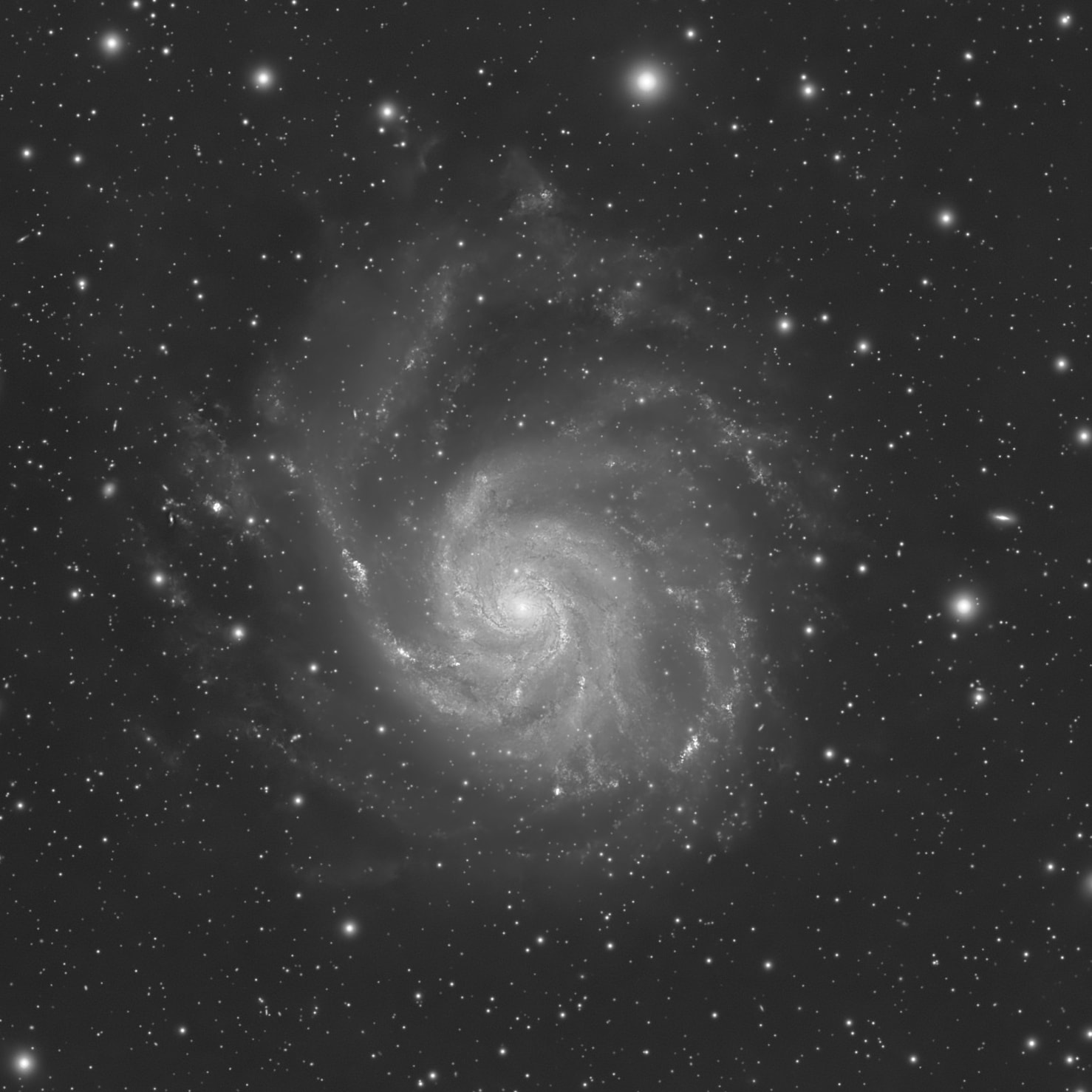Acquisition Details
| M101 | Ha | Lum. | Red | Green | Blue |
|---|---|---|---|---|---|
| Frames | 75 | 95 | 45 | 40 | 45 |
| Exp. Time | 300s | 300s | 300s | 300s | 300s |
| Flats | 20 | 20 | 20 | 20 | 20 |
| Flat Darks | 20 | 20 | 20 | 20 | 20 |
| Darks | 20 | 20 | 20 | 20 | 20 |
Final Masters
Processed Luminance
 Processed luminance
Processed luminance
Description
I present to you my very first dark sky image: Messier 101, the Pinwheel Galaxy ✨️ — captured under Bortle class 3 skies using remote observatory data in collaboration with JoepsAstronomy. This project totals a whopping 25 hours of integration, combining broadband (LRGB) and narrowband (Hα) to reveal the galaxy’s sweeping spiral arms and faint outer halo.
The pink patches scattered across M101’s arms are Hα regions—massive clouds of hydrogen where new stars are born. Even more amazing: while M101 lies roughly 21 million light-years away in Ursa Major, all the bright foreground stars in this image belong to our own Milky Way. Two galaxies, one frame.
This was a true processing challenge, balancing the rich LRGB data with the more intense Hα signal, done in PixInsight. I focused on enhancing the fine structures without over-emphasizing noise or losing the galaxy’s natural colors. Especially the core needed some final tweaking to make the dust swirls stand out more since it is pretty bright.
Captured remotely with the same setup as my own: ASI533MM Pro and the small but powerful Askar 71F. Each frame was 300 seconds long, collected over multiple nights.
🔭 Clear skies!
Astrometry Calibration
| RA center | 14h03m01s.4 |
| DEC Center | +54°19′37″ |
| Pixel Scale | 1.981 arcsec/pixel |
| Orientation | 356.768 degrees |
| Field radius | 0.883 degrees |
Data Processing
Processing was done in PixInsight only. Steps of the process are listed below:
- SpectrophotometricFluxCalibration,
- DynamicBackgroundExtraction,
- PixelMath to combine the RGB data with the Hα: $T * 0.2 + Ha * 0.8 (yep, should have used median instead),
- ImageIdentifier
- SpectrophotometricColorCalibration,
- BlurXTerminator,
- MaskedStretch for stretching the image while keeping the bright parts of the galaxy under control,
- HistogramTransformation for final stretches
- NoiseXTerminator on the image using settings: HF: 0.95, LF: 0.70, Scale: 7.4, Iterations: 5,
- DynamicBackgroundExtraction to remove the background gradients,
- CurvesTransformation for color correction,
- ChannelCombination to merge the Luminance data with the HaRGB data,
- UnsharpMask for sharpening the image a bit
